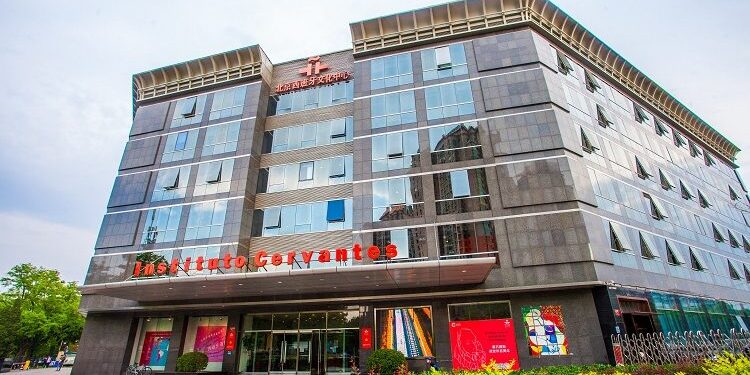Eduardo González
The director of the Instituto Cervantes, Luis García Montero, begins today a work trip to China that will lead him to visit, for the first time since he took office, the Cervantes facilities in Beijing and Shanghai and to sign several academic certification and teaching agreements. of Spanish with educational organizations of the Asian giant.
Spanish is consolidating itself as the second foreign language with the greatest demand in China, due, among other reasons, to the important economic and cultural interests that the Chinese Government maintains with the Spanish-speaking world.
In this context, the demand for Spanish is increasing in this country, where it is taught in secondary and university education. Furthermore, in 2018, the growing weight of Spanish on the international scene led the Chinese authorities to allow it to be offered as the first foreign language in the school and university curriculum.
Since the opening of the Instituto Cervantes headquarters in Beijing, in 2006, and the Miguel de Cervantes Library in Shanghai, in 2007, the number of Spanish students in China has grown to reach 60,000, between formal and non-formal education. Furthermore, according to sources from the Chinese Ministry of Education, Spanish is taught in more than a hundred faculties, with a total of 25,000 students.
China is at the forefront in terms of the number of people enrolled in the DELE (Spanish Diplomas) in the Instituto Cervantes network, with more than 5,500 examinees in 2023 and almost 60,300 exams since its implementation. In addition, it is the first country in results from the International Spanish Language Evaluation Service (SIELE). The growing interest in certifications is due to demand from students who wish to continue their studies in a Spanish-speaking country or from those who learn Spanish in the private sector and who require a globally recognized diploma. Furthermore, Spain is one of China’s main trading partners, so mastery of Spanish opens multiple opportunities in business, tourism and education, not only in Spain but throughout the American continent.
The trip and the agreements
García Montero, whose trip will conclude on Saturday, April 20 and who will be accompanied by the Academic Director of the institution, Carmen Pastor, will begin his agenda tomorrow, Tuesday, with a meeting in Beijing with the top officials of the National Authority for Educational Examinations (NEEA). , the body that authorizes the administration of foreign language exams throughout the country): its director, Li Qiang, and its vice director, Zhang Weizhou.
Subsequently, the director of Cervantes will hold a meeting with the director of the Center for Language Teaching and Cooperation (CLEC), Yu Yungfeng, during which the agreement that both institutions have signed for teaching Spanish to Chinese teachers in the Confucius institutes of Europe and America will be renewed.
In the afternoon, the in memoriam legacy of the Chinese Hispanist Dong Yangsheng will be celebrated, who died last January and who was a professor at the University of Foreign Languages in Beijing, president of the Asian Association of Hispanists and author of what is considered the best translation of Don Quixote of La Mancha into Mandarin Chinese.
After passing through Beijing, García Montero will travel to Shanghai, where on Thursday, April 18, he will visit the facilities of the Miguel de Cervantes Library and meet with its management team and staff. Dependent on the Consulate General of Spain, the Cervantes of this megalopolis has organized intense academic and certification activity since 2007 and hosts numerous cultural programs that bring Hispanic culture closer to the Shanghainese population.
The next day, April 19, after a meeting with the rector of the Shanghai International Studies University (SISU), Li Yansong, García Montero will Impart, at the university’s International Education Center, the conference Spanish, language for a new globalization, in which he will analyze how language can contribute to establishing more equitable relationships in the international context as well as acting as a bridge between different societies.
On Friday afternoon he will participate in Shanghai in several cultural activities of the Instituto Cervantes delegation, including the exhibition Antonio López and the Masters of Spanish Realism, within the framework of the Cervantes agreement with the Shanghai Metro. Next, he will travel to the Pudong Art Museum (MAP), where he will visit the installation of the Years of Splendor exhibition. The history of Spain in the Prado Museum, with almost 70 works from the Spanish art gallery, in which the Cervantes of China collaborate, which will open on April 22. The work program will conclude on Saturday, April 20, in the afternoon with the presentation by García Montero of a round table at the MAP.






